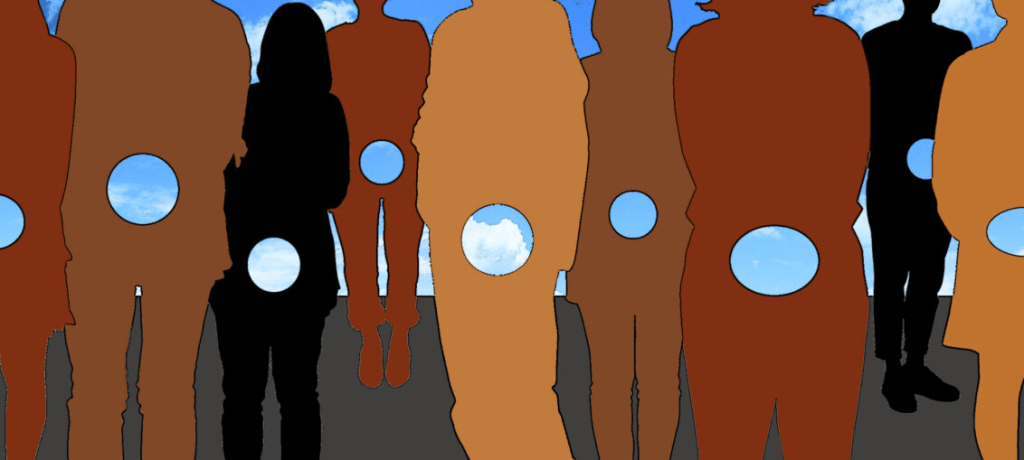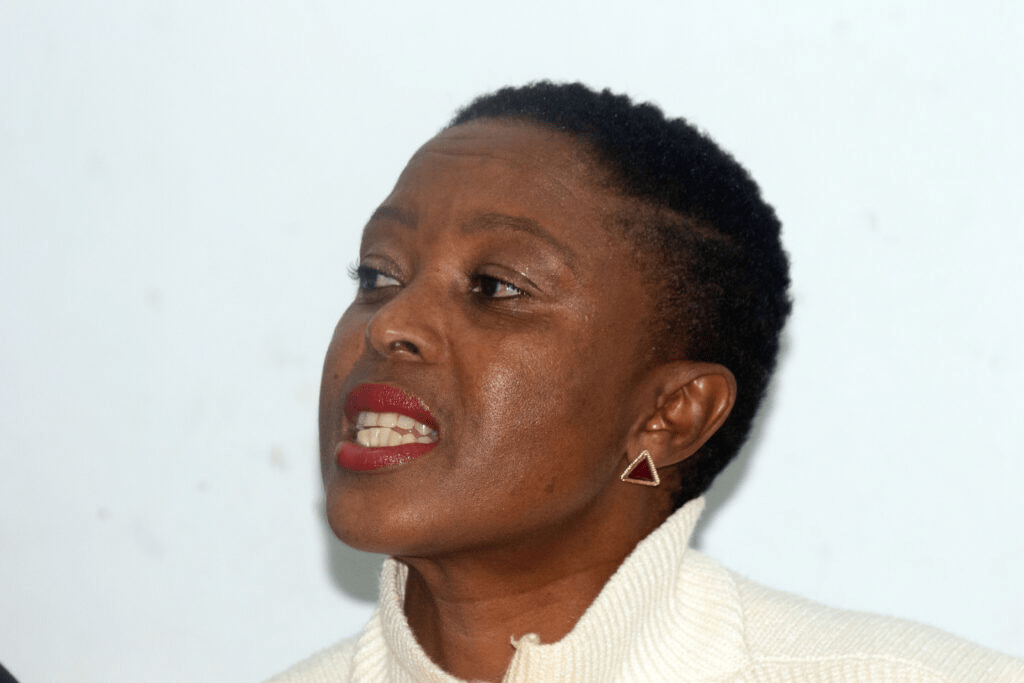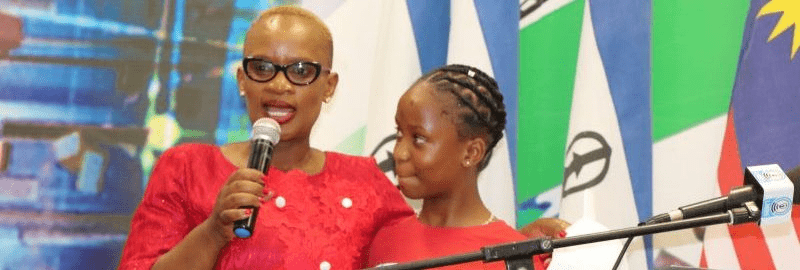Invisible Wounds Of Involuntary Sterilisation On Women Living With HIV
HIV activist, ‘Malijo Baji, was five months pregnant when a private doctor in Maseru told her to abort her baby and get sterilised because of her HIV+ status. Her story has thrown a spotlight on the pressure HIV+ pregnant women are being put under by medical facilities to get sterilised. Some doctors perform sterilisation without the patient’s knowledge or consent. Aside from this being an infringement of women’s basic human rights, there is an additional consequence for many sterilised women. They are often rejected by their male partners who believe that a woman without a womb is cold and manlike.
5 July 2023 by Pascalinah Kabi

This investigative reporting was supported by the International Women’s Media Foundation’s Howard G. Buffett Fund for Women Journalists.
In 2023 the phrase ‘involuntary sterilisation’ might seem to belong in the history books but this practice continues in Lesotho. Women living with HIV are the main targets. This is confirmed by Malijo Baji’s experience as well as research which offers documented evidence that HIV-positive women in Africa continue to be subjected to involuntary sterilisation.
Lesotho has the second highest HIV prevalence in the world and Baji, aged 52, is one of the 88, 776 women living with the virus in Lesotho. Baji’s smile quickly disappeared when her private doctor (name withheld to protect the child) told her to abort her five month pregnancy because of her HIV status.
“When I was five months pregnant, the doctor advised me to terminate the pregnancy. His first reason was that I was too old to be pregnant and the second was my HIV status,” Baji told MNN Centre for Investigative Journalism in May 2023.
She says that the doctor, who runs private surgeries in Lesotho and South Africa, explained to her that aborting the unborn baby was to make sure that the child was not born with a disability or infected with HIV at birth. Abortion is illegal in Lesotho.
Baji rejected her doctor’s advice. However, on the day she gave birth, things changed unexpectedly. Baji was admitted for a caesarean on 4 December, which was two weeks before her due date, in Bloemfontein, South Africa.
“Immediately after I delivered the baby, he (the doctor) brought a form and explained that he was going to permanently sterilise me right there and then, that I was not supposed to be carrying children because there are chances that I will infect my children with HIV,” Baji explained. She signed the form.
Involuntary sterilisation a human rights violation – rights group
Involuntary sterilisation is a process where women are forced or coerced into sterilisation – a permanent birth control.
Research by the Women and Law in Southern Africa (WILSA) Lesotho in 2016, revealed that there were 470 women living with HIV who were forced or coerced into sterilisation in Lesotho. The study was carried out in collaboration with the Community of Women Living with HIV in Lesotho (CW).
Advocate Libakiso Matlho is the executive director at WILSA Lesotho. She says forced sterilisation is prevalent in government and public hospitals.

WILSA Executive Director Advocate Libakiso Matlho. Credit: Retselisitsoe Khabo
“It (forced sterilisation) is a prevalent thing. It especially happens in the public health sector because most people that go to the public health sector are women who cannot afford private services in the health sector,” Adv Matlho told MNN in March 2023.
She says the majority of these women were unaware of their Sexual and Reproductive Health Rights (SRHR) and tended to believe everything clinicians told them.
In the case of women living with HIV and from poor backgrounds, Adv Matlho says clinicians have a tendency to decide to sterilize women without their consent at the time of giving birth.
“When they go to the public hospitals for services, health practitioners decide on their own to just stop this person from having more children,” Adv Matlho said.
She added: “We found a lot of stories where most women were not even aware that they were sterilised. They only learnt after some had side effects after giving birth and constantly consulted a doctor.”
She says the side effects included prolonged and constant heavy vaginal bleeding. Matlho says in some instances, a woman discovered that she was sterilised after a doctor told her “you are constantly bleeding because your womb has been sterilised.”
“The woman was bleeding continuously, only to find that the doctors had not removed her womb in its entirety and caused continuous bleeding. So as they regularly consulted doctors, it was discovered that this happened because her womb was removed and she asked, why was my womb removed?”
Ebenezer Durojaye is a Professor of Law and Head of the Socio-economic Rights Project at University of Western Cape. In 2018, Professor Durajaye published a research titled Involuntary Sterilisation as a Form of Violence against Women in Africa.
The report states that people living with HIV still encounter discriminatory practices on a daily basis in many African countries.
“The situation is worse for women living with HIV who are erroneously believed to be incapable of exercising their sexual and reproductive desires, including raising a family,” Prof Durajaye said.
“Consequently, women living with HIV have been subjected to forced or coerced sterilisation.”
He adds that the assumption that women living with HIV were incapable of deciding on the number of children they want raises “both legal and ethical concerns.”
In 2014, WILSA carried out its initial research titled Forced Sterilisation in Lesotho: 2014 which covered four districts of Maseru, Thaba-Tseka, Mafeteng and Quthing. The study concludes that forced sterilisation remains a problem for women living with HIV in Lesotho.
“However, instances of forced sterilisation are not reported as the victims are unaware that this is a violation of their rights,” reads the 2014 report.
It added: “This is exacerbated by the fact that the national laws do not establish forced sterilisation as an offence. Even in cases where perpetrators are reported, they cannot be charged with the relevant offence for the lack of an enabling legislation.”
However, the report indicates that this violates the victims’ or survivors’ rights both under international law and Lesotho human rights standards.
WILSA says there is an urgent need to enact a Sexual and Reproductive Health Rights Policy into an Act of parliament to ensure that the policy’s contents are enforceable.
The organisation says the policy is a good tool that seeks to protect people against any form of discrimination, including involuntary sterilisation.
Adv Matlho says there are fewer stories of involuntary sterilisation in private surgeries because “most of the people who access private health services have more knowledge on their rights and they can decide on what they want and what they do not want.
That is why you will find out that it is rare that you can find where they have been forced to do something they do not want to do and when they go there, they know what they want to do.”
I am angry – Baji
When Baji fell pregnant with her now 16-year-old HIV negative daughter she consulted with a private doctor.
Baji says following her refusal to abort the baby or have the foetus HIV tested, shortly after giving birth when she was still in theatre the doctor coerced her into a permanent birth control, sterilisation in other words. This was to make sure that she never had a chance to “infect her babies with HIV.”

HIV activist ‘Malijo Baji has broken her silence on coerced sterilisation. Credit: National Aids Commission
“He did not give me a chance to say yes or no. Truth of the matter is that I thought it was the right thing to do. The doctor never gave me a chance to have an opinion over this matter,” an emotional Baji said.
She added: “He gave me the form, I signed and they did their job of permanently ensuring that I do not fall pregnant ever again. I am telling the honest truth, 16 years later, I regret the decision. I do not know how to explain myself further.”
Baji strongly believes her chances of having more children were unjustly snatched from her. “I wanted to have more children after that pregnancy, I did not get that opportunity and I do not even have a chance to make babies any more.”
Baji publicly disclosed her HIV status a few years after her 1999 diagnosis and at the time of falling pregnant in 2007, she was a well known HIV activist in Lesotho.
The coerced sterilisation makes her even angrier because “by that time I already knew how to take care of myself and was responsible enough to not pass the virus to my unborn child.”
Sixteen years later, Baji says “ I am angry.” She has decided to share her coerced sterilisation story now to help other women daily dealing with invisible wounds of involuntary sterilisation to know that they are not alone.
Broken marriages
Advocate Libakiso Matlho of WILSA says there is a long-standing myth among men that the vagina of a woman whose womb has been removed is cold and unable to provide warmth during sex.
She says many women living with HIV, who have been involuntarily sterilised, lost their marriages based on this myth.
“One woman discovered immediately after giving birth, while still in hospital (that she was sterilised). She was HIV positive, her spouse was positive as well. What happened is that, after giving birth and still on the hospital bed, she realised that as nurses and doctors were doing rounds, there was a bucket under her bed which was not being removed.
“She could tell that there were no buckets under the beds of other nursing mothers. She called one of the assistants and asked “what is this thing under my bed” and they said “its your womb in there”. She responded by saying “thari ea ka ha ho etsahalang (why is my womb there)”, and they (clinicians) said “your womb has been removed”.
“Now that she is in this situation which she did not even choose for herself, her husband divorced her because of myths that a woman is cold when her womb has been removed. They say a woman is cold, I don’t even know what men mean when they say a woman is cold,” said Adv Matlho, who added that the woman’s husband divorced her while she was suffering continuous bleeding because of her sterilisation that had gone wrong.
A 53-year-old woman living with HIV, ‘Mamoletsi Moletsi went for a pap smear 25 years ago and was immediately booked to see a gynaecologist the same day.
“The gynaecologist asked me how many children I had. I said two and he (gynaecologist) said that he did not know what more I needed because “this is going to kill you”.
“I was on the stage that is called CIN3 and it is not even stage 1 of cancer, it is just a developing phase of cells that may lead to cancer. I was on the CIN3 stage and my womb was removed,” Moletsi told MNN in February 2023.
Moletsi is the chairperson of the Community of Women living with HIV in Lesotho. “They removed my womb at the age of 28. At the time I demanded to have a copy of my (medical) file, because I was now aware that they were not supposed to remove my womb, the file had disappeared. It was no longer available at Queen II (Elizabeth Hospital),” Moletsi said.
Moletsi says she still wanted to have more children at the time of her coerced sterilisation.
“I still desired to have more children. I was young and married. My marriage collapsed,” she said and added that her marriage collapsed when her partner found out she had been sterilised.
“Once men know that a woman has been sterilised, he will say you are cold, you are now a man. It was that situation…I think it was more psychological that as a woman, you know that there is something (wrong with you) because there is no counselling before and after sterilisation.
“One of the things that made it very easy for me to sign my divorce papers without going to court, was my understanding that I must let this person go because he fathered children in his second marriage. I knew that I would never give him more children. I never fought for my marriage because I knew that I was no longer perfect,” Moletsi said, who adds that she made the difficult, life-changing decision never to remarry because of her inability to fall pregnant.
“I was divorced at a young age, this (sterilisation) made me not want to get married again because I wondered where I was going to get children if I married and my husband wanted children.
“I still feel like there is something which was taken away without my permission, maybe that choice to decide whether these two children are enough or I want another child or even the choice of a life of taking contraceptives,” Moletsi said.
Meanwhile, Baji longs to have a son with her husband. “Sometimes I suspect that God would have blessed me with a boy child. I love a boy child. This is the most painful experience ever. I am not happy, not at all.”
This story was produced and first published by the MNN Centre for Investigative Journalism.

